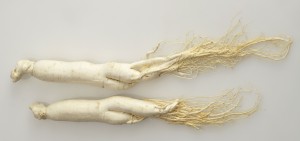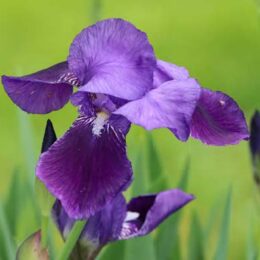 ‘Digging it” was a popular saying way back in the day. For an old hippie, it means being in tune with or appreciating something. But, for old time woodland foragers, “digging it” means hunting for ginseng.
‘Digging it” was a popular saying way back in the day. For an old hippie, it means being in tune with or appreciating something. But, for old time woodland foragers, “digging it” means hunting for ginseng.
Ginseng is an ancient mystical plant, highly valued by herbalists for its wide variety of applications, cures and treatment for various conditions. It has been prized for hundreds of years in east Asia, and with the development of the New World, North America became a treasure trove of ginseng.
The ginseng plant is deciduous and drops its leaves late in the fall. During spring warm up, a small rhizome or “neck” develops at the top of the root with a regeneration bud at the apex of the rhizome. New leaves will emerge from this regeneration bud.
As the plant ages, it will typically grow five leaflets. Development continues until the fifth year. A mature plant is 12 to 24 inches tall and has four or more leaves, each consisting of five ovate leaflets. Leaflets are approximately five inches long and oval-shaped with serrated edges. In midsummer, the plant produces inconspicuous greenish-yellow clustered flowers. The mature fruit is a pea-sized crimson berry or cluster of berries with each berry generally containing two wrinkled seeds.
After five years of growth, the roots begin to attain a marketable size (3 to 8 inches long by a quarter to 1 inches thick) and weigh approximately an ounce. In older plants, the root usually weighs more, are enhanced by form, and much more valuable.
Ginseng roots should be dried on wire-netting shelves in a heated, well-ventilated room. Since overheating destroys color and texture, begin drying the roots at a temperature between 60-80 F for the first few days, then gradually increase it to about 90 F for three to six weeks. Turn the drying roots frequently. Store the roots in a dry, airy, rodent-proof container just above freezing.
Early on, I learned the shape and age of a ginseng root can greatly influence its marketability. When I was a boy, an old fur buyer showed me a “man root.” He said the specially shaped root would fetch enough to buy a brand new Browning shotgun.
A root resembling a person is fairly rare and worth a lot of money. The most marketable roots are old, variously shaped and forked, moderate in size, stubby but tapering, off-white, light in weight but firm when dried, and have numerous, closely formed rings of wrinkles.
The ginseng market has fluctuated wildly in the past few years with 2013 seeing a jaw-dropping price of over $1,000 per pound for high grade, wild grown ginseng.
But before you load up a backpack and trench shovel and head for public land, be aware: digging ginseng in Indiana is highly regulated and prohibited on state-owned properties.
Harvest season is from Sept. 1 to Dec. 31 of each year. Harvesters may legally dig wild ginseng and do not need a license to dig ginseng or to sell ginseng to a licensed dealer. The harvest season was instituted to encourage replanting of the seeds when they are ripe and ensure only mature plants are taken.
The selling season is from Sept. 1 of the current year to March 31 of the following year. Dealers may legally purchase ginseng from harvesters. When reselling ginseng purchased directly from harvesters, the dealer must fill out a form certifying the ginseng’s origin and weight. A copy of the certification must accompany the ginseng when it is shipped.
Jack Spaulding is a state outdoors writer and a consumer of RushShelby Energy living along the Flatrock River in Moscow. Readers with questions or comments can write to him in care of Electric Consumer, P.O. Box 24517, Indianapolis, IN 46224; or email jackspaulding@hughes.net.



